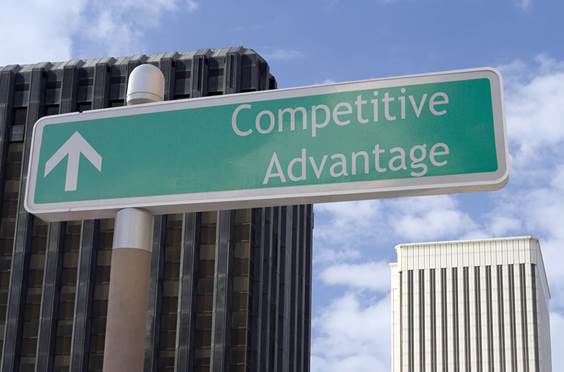Tag: branding

WIOA & WORKFORCE BOARDS—USING PLACE BRANDING TO PARTNER WITH ECONOMIC DEVELOPMENT
A core component of the Workforce Innovation and Opportunity Act (WIOA) focuses on regional collaboration by promoting alignment of workforce development programs with regional economic development strategies to meet the needs of local and regional employers.
A core component of the Workforce Innovation and Opportunity Act (WIOA) focuses on regional collaboration by promoting alignment of workforce development programs with regional economic development strategies to meet the needs of local and regional employers. More often than not, these two verticals (workforce and economic development) work within silos rather than leveraging the network of available resources and services to support the growth, attraction and retention of businesses. Additionally, workforce development boards (WDBs) are not traditionally viewed as high value assets to economic developers. How can WDBs change this image and perception? Consider place branding as a strategy for alignment and collaboration with economic development.
Place branding is the practice of applying product and corporate branding theory to a location. It defines how a community or region sees itself in relation to the rest of the world, and then uses this value proposition to build an identity. The process involves evaluating a place’s strengths and weaknesses, and then communicating the differentiating and winning characteristics.
Economic developers have long used place branding as a strategy to package a place’s assets and position it as a great location to work, live and play. “Keep Austin Weird” or “What Happens in Vegas Stays in Vegas” are among some of the more recognizable place branding slogans meant to depict the unique identity of a place.
A report by the group CEOs for Cities says branding can help repair a city’s image problem and raise awareness of what makes it a good place to live. It goes so far as to call branding the foundation of what makes a place desirable. “A city is not Coca-Cola,” says Alison Maxwell, deputy director of economic development for Glendale, Calif. “It’s a living, breathing, amorphous entity. Good branding can bring the sum of the parts together and give you a hook to hang your identity on.”The idea of place branding is not a new concept, but how place branding effects economic development beyond tourism has not been widely documented.
So, what really matters in branding a place?
Measuring Place Branding
Simon Anholt developed the City Brand Index to measure how well cities are promoting themselves as brands and track their successes and stumbles over time. The study polls nearly 20,000 people in 20 countries each year, asking more than 40 questions about their perceptions of 50 cities. There are six ‘dimensions’ that contribute to Anholt’s City Brand Index. Workforce Development Boards (WDBs) can have direct influence on the “potential” measure of Anholt’s index.
- Presence—Examines the city’s international status and standing and the global familiarity/knowledge of it. Presence measures the city’s global contribution in science, culture and governance.
- Place—Explores people’s perceptions about the physical aspect of each city in terms of pleasantness of climate, cleanliness of environment and how attractive its buildings and parks are.
- Pre-requisites—Determines how people perceive the basic qualities of the city; whether they are satisfactory, affordable, and accommodating, as well as the standard of public amenities such as schools, hospitals, transportation, and sports facilities.
- People—Reveals whether the inhabitants of the city are perceived as warm and welcoming, whether respondents think it would be easy for them to find and fit into a community that shares their language and culture, and whether they would feel safe.
- Pulse—Measures the perception that there are interesting things to fill free time with, and how exciting the city is perceived to be in regard to new things to discover.
- Potential—Measures the perception of economic and educational opportunities within the city, such as how easy it might be to find a job, or whether it’s a good place to do business or pursue a higher education.
While Anholt focuses on global cities, new research from Xavier University produced a ranking index of American states. The American Dream Composite Index™ (ADCI) score is derived by ranking all 50 states and the District of Columbia. It reveals “what people living in America do, strive for, work for, wish for, and ultimately hope for in their daily lives,” and it attempts to quantify how well people in America are achieving the American Dream. It is the first index that attempts to gauge whether the American Dream is authentic and attainable by studying whether people are actually living it. This new index is intended for elected officials to examine a state’s performance and identify opportunities for improvement around achieving the American Dream.
Businesses can compare states to help determine where it will be most advantageous for them to establish business operations, so that their employees will live in a state where the American Dream is more easily realized. The question is whether this index holds any credibility with businesses.The Burghard Group ran a market research survey among business executives to assess the role the ADCI could play as a differentiator of location and choices in site selection. While only 83 executives completed the questionnaire, the results showed: a) a likelihood that businesses would use the ADCI to differentiate between locations under final consideration; b) executives believe a higher ADCI score provides desirable business benefit; and c) executives would likely to definitely not consider relocating their business to a state with a lower ADCI score even if incentives were offered.
The ADCI is in its early stages, but it is clear that businesses are highly tuned into important factors that WIBs can help influence with respect to place branding.
Partnerships in Place Branding
Although some WDBs are embedded within economic development offices (e.g. Denver Office of Economic Development, Riverside California County Economic Development) all WDBs should cultivate partnerships with economic development efforts in their regions. Here are nine ways that WDBs can play a proactive role as a participant and contributor to place branding with economic developers.
- Examine the strategic plans of the economic development organization to understand their goals and objectives for place branding.
- Identify where workforce talent plays a role in the economic development strategic plan.
- Align funding and resources to address issues that are critical to building workforce talent.
- Use data that accurately represents your region, and not anecdotal input, to drive the discussion around potential strategies and initiatives.
- Demonstrate the ability to convene large stakeholder groups that include education, economic development, business and industry to leverage resources and create a collective impact in addressing workforce talent needs.
- Identify large scale initiatives that the WIB is developing to address the area’s talent issues.
- Develop communication tools that economic developers would find useful during site selection meetings and to use for marketing purposes.
- Market directly to community stakeholders to help them understand the role that the WIB has in solving large-scale workforce talent issues, not just managing a funded program.
- Create a collective scorecard with economic developers in measuring workforce talent results in an area.
Applying these strategies can help develop synergy between workforce development goals and economic development goals of bringing wealth into a region by attracting investment and supporting business and entrepreneurial growth.
Share this article

Thought Leaders in Workforce, Education & Entrepreneurship



